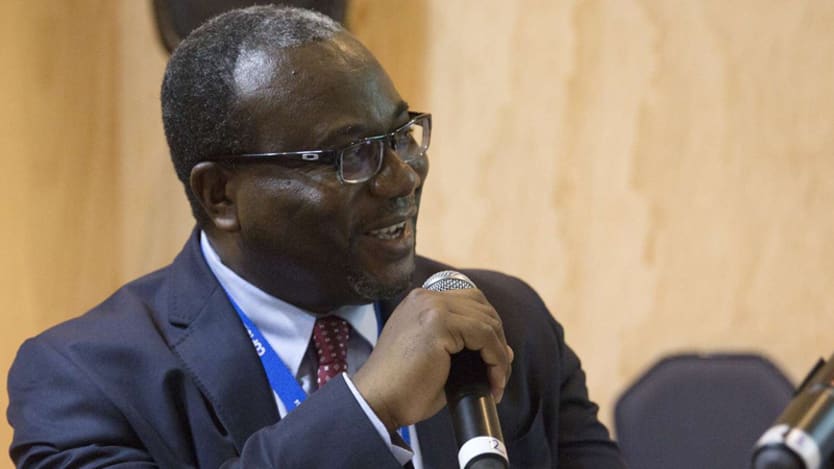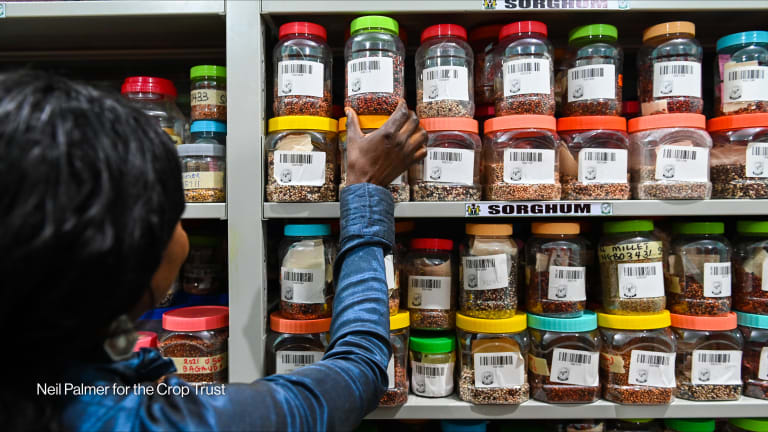
The International Treaty on Plant Genetic Resources for Food and Agriculture has been an important approach to building food secure futures since 2001.
The treaty’s multilateral system covers more than 1.5 million samples of plant, seed and crop varieties, which are maintained by national governments and international agricultural research centers. All the resources are in the public domain to allow developing nations equal access.
But as the world has changed dramatically in the past 16 years, insiders say the treaty too needs to change to reflect the needs of both developed and developing countries in a time of growing environmental hardship.
Last month, Kent Nnadozie, secretary of the treaty, visited Canberra to meet with government, industry and other stakeholders to discuss the planned enhancement to the treaty systems, for feedback on areas that work and may need improvement.
Devex caught up with Nnadozie to discuss changes to the treaty, the signing of the U.S. — the newest member — and plans to continue providing developing nations with an even agricultural playing field. This interview has been edited for length and clarity.
Australia ratified the treaty in 2006. A lot has changed politically, financially and economically in the past 11 years. What has been the feedback during your visit from Australia, and what are some of the shifts that need to be addressed around food security and sustainability?
Firstly, they have continued to express their support, which we greatly appreciate. Australia believes in the work we are doing to help sustain and improve access to plant genetic material for food security at a national and international level — and support the global community.
One of the key issues we are facing is climate change. Previously it appeared to be theoretical and academic. But with extended droughts, flooding and soil degradation, the effects of climate change have been shown as real and especially relevant to this treaty.
There is a need to have continued access to genetic material that can be improved and adapted to emerging conditions and a changing climate — drought resistant and disease tolerant varieties, for example, that can thrive in harsh environments.
But other changes have made the global community realize they need to come together to work on and find solutions to issues of food security in a positive and supportive way — promoting conservation of materials, and establishing neutral environments to discuss and deal with these issues.
On March 13, the U.S. became one of the newest treaty members. As the treaty makes provisions for support to developing countries through sharing of genetic material and a grants program, this is one of the first positive signs for the development community under the new administration. What was the process of getting the U.S. to sign up to the treaty?
There has actually been long bipartisan support for the treaty, but a range of other priorities have prevented them from becoming members until now.
When Barack Obama came into power, there was a process to ratify while Joe Biden was the chair of the Committee on Foreign Relations. The week before it was meant to be tabled on the Senate floor, Obama nominated Joe Biden as his running mate so it dropped off, and wasn’t tabled.
The next opportunity was when they tried to pass Obamacare — this drowned out anything else and we were shifted again.
At the end of the Obama Administration, it came up again in the cleanup process. As it had long had bipartisan support in the Congress, there was no opposition to it.
It is a testament to the treaty — in that it is both beneficial to the U.S. and provides global benefit — that there have been no issues with it under the new administration.
Comparing the U.S. to Australia, what do both bring to the table in terms of leadership, expertise or capability for the treaty to assist with global food security?
The U.S. holds the largest national collection of seed resources — the diversity is amazing. This alone makes them an important partner.
Australia brings advanced research capacity, including expertise and technology in working with highly developed and advanced crop varieties. They have contributed financially to the beneficiary fund of the treaty, which is used to support farmers in developing countries, but they also provide political support for the treaty, and bring a pragmatic approach to finding solutions to issues.
Italy, Norway, Spain and Switzerland are also important partners to the treaty, and they have contributed significantly to the work of the beneficiary fund.
When food security is being discussed, nutrition and the need to provide nutritious options to the population of the future is being discussed in association. What role does, or should, the treaty play in this?
In the past, there has been a tendency to disconnect genetic resources and crop varieties from the end product available in the markets. But to be able to develop varieties that are nutritious and high quality, with enhanced nutrients, we need to be able to breed those varieties.
Genetic material and discovering the traits for nutritious food is important, and that is an important part this treaty plays.
Have there been any discussions on new research or collaborative projects during your time in Australia?
One of the issues I have discussed with the Department of Foreign Affairs and Trade during my visit is the support they have been providing to Pacific countries for agricultural development in the region. We are encouraging regional networks to pool experts and develop varieties to withstand local stress collaboratively.
One of the projects Australia has funded is a collaboration between the University of Queensland and the Secretariat of the Pacific Community, which will benefit food and nutrition for Pacific Island countries.
These collaborations are important. If we have well-fed communities the region is safer — it goes beyond nutrition and aid. When you add the security component, you have a safe neighborhood, and there is also the benefit that new crop varieties developed in the region can benefit Australian farmers.
When you discuss the benefits of the treaty with countries, what is the message you aim to get across and how is engagement progressing?
The investment is not aid or charity. It is a very rational investment that is guaranteed to yield return in the long-term. To engage in this is no longer theoretical or academic. Food security has very realistic and tangible consequences in everyday life.
At the moment there are some partner countries coming along faster than others.
Following this trip, I will be preparing for the seventh session of the governing body of the treaty in late October, possibly in Rome. I will be dealing with issues of improving the system, and items being renegotiated by countries to make it better, more equitable and more balanced.
Countries are calling for greater involvement of the private sector to contribute to, and benefit from, the system and we will be working on this further to support their needs.
We do also want to see more financial contribution from countries, not just attending meetings. There are the budgets for running the treaty to cover, but we also want to be able to provide real benefits to farmers in developing countries through the beneficiary fund. Our projects so far have provided high impact through small funds — and we want to continue this impact.
Australia has been very faithful and consistent in their contributions, and we thank them for that.
Read more international development news online, and subscribe to The Development Newswire to receive the latest from the world’s leading donors and decision-makers — emailed to you free every business day.








